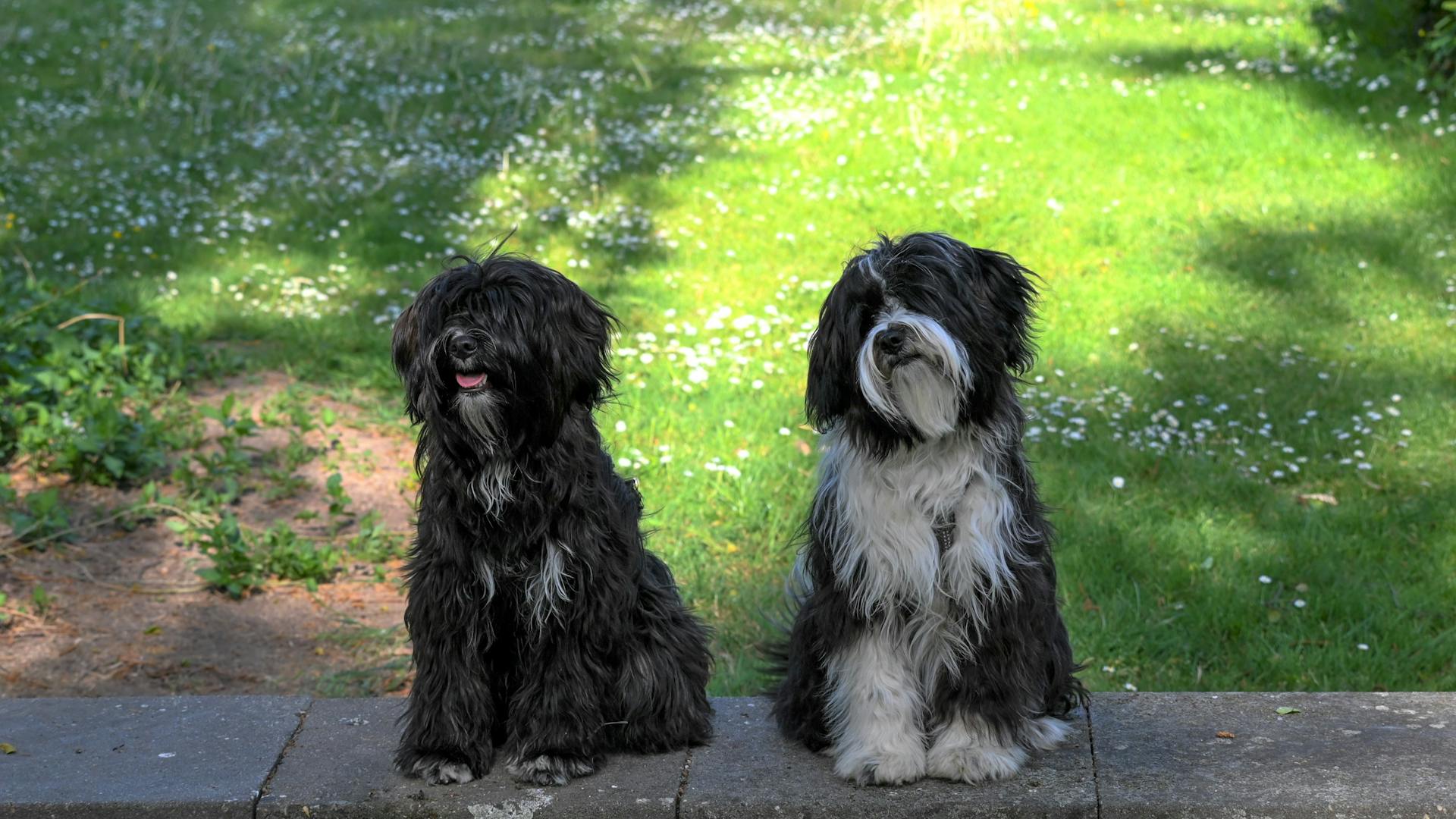
The Irish Red and White Setter is a breed like no other, and if you're considering bringing one home, you're in for a treat. With their intelligence, energy, and loving nature, they make fantastic family pets.
They're a relatively rare breed, but with the right care and attention, they can thrive in a variety of living situations. Irish Red and White Setters are generally healthy dogs with an average lifespan of 12-14 years.
Before you start the adoption process, it's essential to understand their exercise needs. Irish Red and White Setters require regular physical and mental stimulation to prevent boredom and destructive behavior.
In terms of grooming, they have a short, easy-to-maintain coat that requires minimal grooming.
Breed Basics
The Irish Red and White Setter is an ancient breed with a rich history. Traditionally used by falconers, this dog would go into a "set" or "freeze" when it scented game, allowing hunters to locate and catch birds.
Its original purpose was to help hunters locate game, and its distinctive colors made it easier to spot from a distance. This breed was preferred by hunters because of its visibility.
In the past, Irish Red and White Setters were used with nets to catch birds, and hunters would throw nets over the crouching birds once the dog had located them.
Size
When considering the size of an Irish Red and White Setter, it's essential to know that males stand 24 to 26 inches at the shoulder.
These dogs generally weigh between 50 to 70 pounds, which is a great size for active families.
Males stand 24 to 26 inches at the shoulder, making them a sturdy and athletic breed.
Females, on the other hand, are slightly smaller, ranging from 22.5 to 24 inches in height.
Their weight range remains the same, between 50 to 70 pounds, making them a great fit for many living situations.
Personality
Irish Red and White Setters are known for their friendliness and affection, eagerly seeking the company of people.
They are natural family pets, getting along well with children and other pets due to their gentle nature.
Their high activity level requires regular exercise, with at least two hours of daily walks, playtime, and hikes.
Irish Red and White Setters are intelligent and trainable, responding well to positive reinforcement and having a strong desire to please their owners.
However, they can be easily upset by loud noises or harsh treatment, so gentle approaches and patience are key when training them.
Consistency is also essential to help them follow commands promptly, as they may not always follow instructions.
Breed Appearance
The Irish Red and White Setter is a striking breed with a distinctive appearance.
Its base color is white with solid red patches.
Flecking or freckling is permitted around the face, feet, up the forelegs to the elbow, and up the hind legs to the hock.
Flecking, roaning, or mottling on any other part of the body is not desirable.
Its hair should be fine and silky to the touch.
Long, silky hair called feathering is usually present on the outer ear flap, on the back of the forelegs and hind legs, and also on the flank to the chest and throat area.
The feathering cannot be curly or wavy and needs to be straight.
It can also not be overly dense or appear puffy.
The Irish Red and White Setter also has a feathered tail.
Its head, front legs, back, and sides have short, flat hair that is not feathered and does not curl.
A slight wave to this shorter hair is acceptable.
Discover more: Silky Havanese Dog
Health and Care
The Irish Red and White Setter is a generally healthy breed, but like all breeds, they can be prone to certain health issues. Hip dysplasia, progressive retinal atrophy, and von Willebrand's disease are some of the potential concerns.
Genetic testing is crucial due to the breed's limited gene pool. Responsible breeders prioritize screening their dogs for these conditions. They also recommend screening for hip evaluation, leukocyte adhesion deficiency, type I, and ophthalmologist evaluation.
To ensure your Irish Red and White Setter lives a long and healthy life, it's essential to provide regular care and attention. This includes daily exercise, such as brisk walks and playtime, as well as regular grooming and veterinary check-ups. Brushing their coat a few times a week, trimming their nails every two to three weeks, and cleaning their ears weekly can help prevent infections.
Care
The Irish Red and White Setter is a joyful and affectionate breed that requires regular exercise to stay happy and healthy. They need at least an hour of vigorous activity every day, which can include brisk walks, jogging sessions, and playing fetch.
Their abundant energy levels make them appreciate having a purpose or task to fulfill, so incorporating activities like agility, dock diving, or tracking into their routine can be a great way to keep them engaged and stimulated.

The Irish Red and White Setter's silky coat requires regular brushing and combing to prevent tangles and mats, especially in the feathering and ears. They also need to have their nails trimmed every two to three weeks, depending on how fast their nails grow.
Their ears should be cleaned weekly and kept free of oils, wax, and dampness to prevent infections. Brushing their teeth often with veterinarian-approved toothpaste is also essential for their oral health.
Here's a summary of their grooming needs:
Feeding
Feeding your Irish Red and White Setter requires careful consideration to ensure they stay in excellent health. High-quality dog food with a protein-rich diet is essential for this active breed.
This breed benefits from a diet that offers ample energy for field activities or regular playtime at the dog park.
Preventing your Irish Red and White Setter from eating too quickly is crucial, as this breed is prone to bloat.
Using slow-feeder dog bowls or opting for smaller, more frequent meals can help mitigate the risk of bloat.
If this caught your attention, see: German Shorthaired Pointer Diet
Breeding Restrictions
The Kennel Club has rules and regulations that prevent a litter from being registered if they don't meet certain criteria.
One key restriction is that Irish Red & White Setters can only be registered if they are proven to be clear of CLAD or hereditarily clear of CLAD, meaning both parents must be clear.
Grooming and Maintenance
The Irish Red and White Setter's coat is characterized by its long and silky texture, featuring a white base with rich patches of deep red.
Their silky coat does moderately shed, which means they don't need many baths, but a bath is necessary when they get into something smelly or really dirty.
You'll need to brush and comb their coat out a few times a week when they're not working in the field, and every time they come in if they are used in the field. Tangles and mats need to be worked out, especially in the feathering and ears.
Curious to learn more? Check out: How Old Do Male Dogs Have to Be to Breed
Regular brushing will keep their coat relatively clean. To prevent infections, their ears should be cleaned weekly and kept free of oils, wax, and dampness.
Their nails will need to be trimmed every two to three weeks, depending on how fast their nails grow.
Here's a quick rundown of their grooming needs:
Exercise and Training
The Irish Red and White Setter is a high-energy breed that requires regular exercise to stay happy and healthy. They need at least an hour of physical activity every day.
Irish Red and White Setters are naturally athletic and love to run, so a daily jog or playtime in a securely fenced area is a great way to get them moving.
Exercise Needs
Exercise needs vary with age, with children and adolescents requiring more physical activity than adults.
The American Heart Association recommends at least 60 minutes of moderate to vigorous physical activity per day for kids and teens.
Older adults need to focus on maintaining muscle mass and bone density through resistance training.
For adults aged 50-64, the Centers for Disease Control and Prevention (CDC) recommends 150 minutes of moderate-intensity aerobic activity or 75 minutes of vigorous-intensity aerobic activity per week.
As we age, our bodies naturally lose muscle mass and bone density, making it essential to incorporate strength training exercises into our routine.
Trainability
Trainability is a key aspect of exercise and training. It's the ability to adapt to new demands and improve performance over time.
Research has shown that the human body can adapt to new demands in as little as 2-4 weeks. This is known as the adaptation period.
Consistency is key to seeing improvements in trainability. Aim to exercise at least 3-4 times per week for optimal results.
Proper nutrition is also crucial for trainability. Adequate protein intake, in particular, is essential for muscle growth and repair.
A well-structured training program can also improve trainability. This includes a mix of cardiovascular exercise, strength training, and flexibility exercises.
With regular exercise and proper nutrition, you can improve your trainability and achieve your fitness goals.
Worth a look: How Much Exercise Do Labrador Retrievers Need
Frequently Asked Questions
Are red and white Irish Setters rare?
Yes, the Irish Red and White Setter is a rare breed, with only 46 puppies born and registered in the UK in 2023. This scarcity makes them a unique and sought-after companion for those interested in this ancient breed.
Sources
- https://www.akc.org/dog-breeds/irish-red-and-white-setter/
- https://dogtime.com/dog-breeds/irish-red-and-white-setter
- https://wagwalking.com/breed/irish-red-white-setter
- https://www.thekennelclub.org.uk/search/breeds-a-to-z/breeds/gundog/irish-red-white-setter/
- https://www.embracepetinsurance.com/dog-breeds/irish-red-and-white-setter
Featured Images: pexels.com


